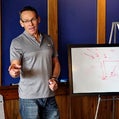10 Body Indicators That Tell You When to Workout & When to Back Off!

TIME TO REST - Pay attention to these 10 body indicators to gauge when to work out and when to back off!
If you don’t take time to rest and recovery, your body wont adapt to the stress of training and racing – and as a result you won’t get stronger or faster. If you neglect recovery for too long, you will start to lose strength and speed.
Here are some symptoms to look for:
- First your sleep patterns will be off (tired and you can’t sleep, restless sleep, etc.).
- Second your energy levels will be negatively affected.
- Third, you will begin to get sick more frequently (and take longer to heal from the virus).
- Fourth, your appetite will become suppressed.
Remember, over training is not applicable only to elite athletes and professionals, recreational athletes have to balance, personal, professional, bills, children, inadequate sleep, etc. which is what makes recovering from your workouts and racing even more difficult.
Symptom Evaluation
See if you are experiencing any of the following symptoms:
Symptom #1-Body Mass
A 2% drop in weight from day to day indicates a body-fluid fluctuation. More than likely, you didn’t hydrate enough to offset heat, humidity, intensity and duration. Dehydration negatively impacts both physical and mental performance and could compromise the quality of your next workout or race.
Symptom 2-Elevated Resting Heart
An elevated resting heart rate is a significant indicator of stress within the body. An elevated HR indicates that your nervous system is in that “fight or flight” mode which results in elevated hormone levels to provide more oxygen to the muscles and brain. Your body doesn’t know the difference between and physical and psychological stress. A hard day at work and/or a hard workout or race both require additional recovery protocols.
Symptom 3-Sleep Quality: you wake up and don’t feel fresh.
Quality sleep: falling asleep quickly, deeply and staying there for a long period of time will allow your body to release the much needed growth hormone (hGH) necessary for rebuilding muscle and burning body fat. Several low quality nights of sleep will decrease your reaction time, immune system, can cognitive functions – not a good scenario when it comes to quality workout or high end performance on race day.
Symptom 4-Hydration: your urine is dark yellow
Unless you are taking B vitamins, a dark colored urine can be an indicator of dehydration. Your urine is an easy indicator of your water levels throughout your body.
Symptom5-Energy Levels are Low
Honesty is the key here. You know the difference between being tired and having low energy. Being tired is about recovering from yesterday’s workload. Being low on energy is a at a completely different level. Athletes think they can block out signs of fatigue and push to the next level of fitness, performance just doesn’t develop in this environment.
Symptom 6-Mood State: your moody (and even cranky).
When your body is overwhelmed by stress (training, racing, work, family, etc.), it produces the stress hormone cortisol that can cause irritability and/or anxiety. Stress also halts chemicals like dopamine, a neurotransmitter in the brain that has a big bummer effect on mood when depleted. Crankiness means not enough recovery.
Symptom7-Sick Frequently
Any illness or even a woman’s menstrual cycle, will increase your need for energy to refuel your immune system, which is having to work overtime. This translates into fewer resources available for recovery from training.
Symptom 8-Pain: your excessively sore or have a nabbing injury.
Whether you are sore from over worked muscles or have an injury that continues to linger is an indicator that your body needs more energy to put towards the repair, which extends your total recovery time.
Symptom 9-Performance is sub-par.
This is a subjective measure of workout quality, not quantity nor intensity. If you perform well on a particular workout, you would rate that workout as “good”. If you have a sub-par performance or feel like you are struggling to complete that same workout, you would rate that workout as “poor”. Trending workout quality – multiple poor workouts in a row – is one of the easiest ways to identify the need for more recovery.
Symptom 10-Oxygen Saturation: low oxygen levels.
The amount of oxygen in the hemoglobin of the red blood cells can be measured and is thought to be an accurate assessment of recovery because of the association of high oxygen saturation levels and higher energy levels.
Evaluation Time: count how many of the above symptoms you have experienced over the last week and then compare this against the following:
0-1: Green Light: you are recovering adequately and can maintain your normal volume and intensity
2-4: Caution: You can complete your hard workouts; however, cut the workout short if you are struggling to complete the first couple of intervals after a long warm up
5-6: Warning: This is the zone where you are close to tipping the scales and becoming over-worked, sick and injury prone. You need to add a second rest day to your week
7-10: Danger: You are IN the danger zone and need to take one week completely off (no sport specific training); increase your high quality food intake and take 2 hour naps each day.
If you want me an my staff to review if you should take a break from training and racing, please feel free to contact us at Contact@CoachRobb.com.
-
 3
3



2 Comments
Recommended Comments